Kalanchoe plants are a great addition to any home. They are easy to care for and come in various colors and sizes. Kalanchoe plants can be used as houseplants, in gardens, or as gifts. Kalanchoes are fun and easy-to-grow succulents that make great houseplants. They come in various colors and flower shapes and bloom for months. A Kalanchoe is a great choice if you’re looking for an attractive and low-maintenance plant. These plants are characterized by their fleshy leaves and stems, which store water for survival during drought.

How to Grow and Care for Kalanchoe Indoors
Types of Kalanchoe Plants
Flaming Katy – Flaming Katy is a succulent plant with thick, fleshy leaves arranged in a rosette pattern. The plant blooms in winter and is often grown as a houseplant.
Paddle Plant – They get their name from their paddle-shaped leaves. These plants are not tolerant of frost, so they should be kept indoors during winter. Paddle plants can be propagated from leaf cuttings or stem cuttings.
Pen Wiper Plant – Pen wiper plant is a small, succulent plant that typically grows to about 12 inches tall. The leaves are arranged in a rosette pattern and may be green, gray, or bronze. The flowers are small and white, blooming in clusters at the ends of the stems.
Panda Plant – The Kalanchoe Panda Plant is a beautiful, low-maintenance succulent perfect for beginner gardeners. This plant is drought-tolerant and does not need much water to survive. The Kalanchoe Panda Plant can grow up to 12 inches tall and spread to 24 inches wide. This plant produces small, white flowers that bloom in the springtime.
Cathedral Bells – The Kalanchoe blooms in the winter, and the flowers are small and bell-shaped. The Cathedral Bells variety of Kalanchoe is named for its showy, pendulous flowers. The blooms are pink, red, or white, hanging from the plant like bells. This plant does best in bright light and well-drained soil.
Beach Bells – The leaves are often fleshy and have a glossy surface. The flowers of Kalanchoe plants can be white, yellow, pink, or red, and they are borne in clusters. Beach bells are a Kalanchoe plant that gets its name from bell-shaped flowers. Beach bells can grow up to 1 meter tall, with green leaves with a purple tinge. The flowers of this plant are pink or red, and they bloom in the summertime.
In case you missed it: How to Grow and Care for Honeyberries in Your Garden
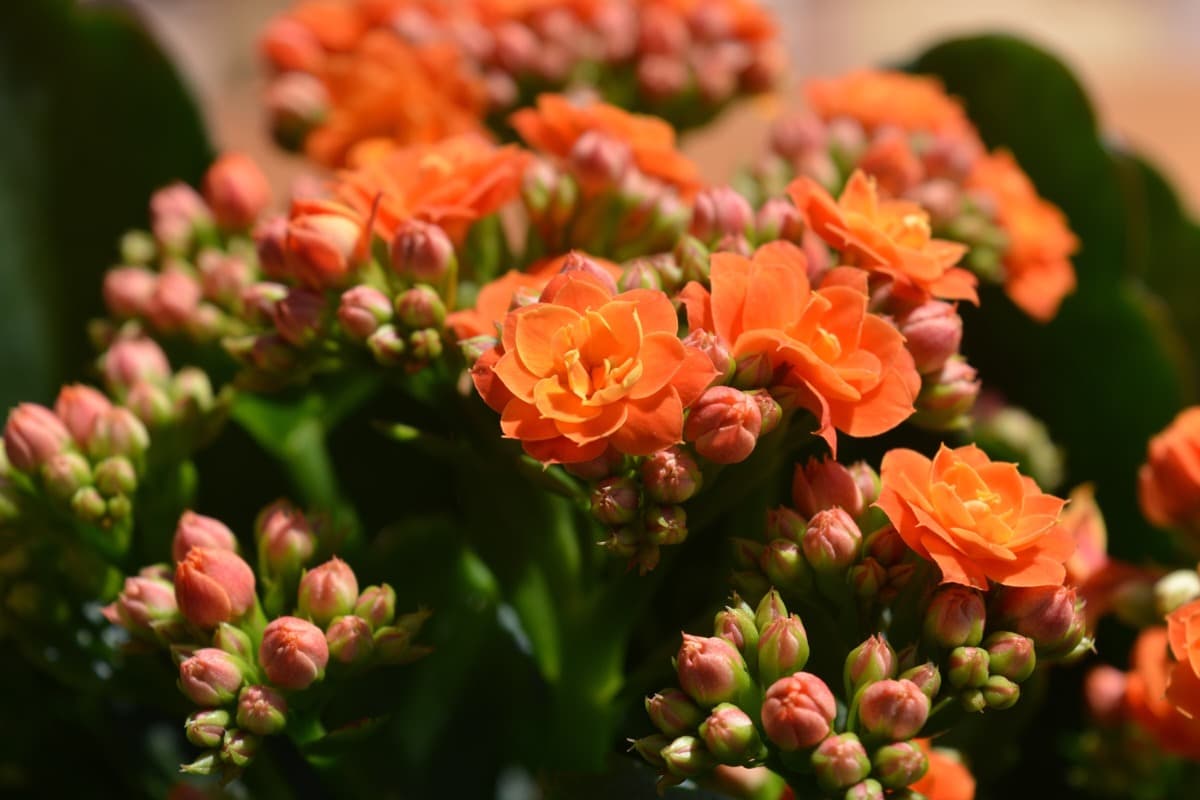
Mother of Millions – Kalanchoe plants come in various colors, including green, red, purple, and pink. Some varieties of Kalanchoe also have variegated leaves. Mother of Millions is a type of Kalanchoe known for its ability to produce large numbers of offsets or baby plants. Mother of Millions is an evergreen succulent, meaning it will retain its leaves year-round. The leaves of Mother of Millions are long and narrow, with pointed tips. The plant produces small flowers that are typically white or pale pink.
Flower Dust Plant – They typically bloom in the late winter or early spring. The flowers are quite delicate, sometimes known as the flower dust plant, because of the powdery substance that covers the blooms.
Climate Suitable for Growing Kalanchoe Indoors
Kalanchoe is a popular succulent plant to grow in pots because it is easy to care for and can thrive in various climates. When choosing a pot for your Kalanchoe, ensure it has drainage holes at the bottom to allow excess water to escape. Kalanchoes prefer bright, indirect light but can also tolerate low-light conditions.
Allow the soil to dry between watering and fertilizing monthly during the growing season. Choose a pot with a south- or west-facing window to ensure your Kalanchoe plants have enough sun. If you don’t have a bright spot inside, put the pot on a tray of pebbles in a sunny spot outside. Bring it back indoors when temperatures drop below 15°C at night. Kalanchoe will need about six hours of sunlight each day.
Soil Requirement for Growing Kalanchoe Indoors
Kalanchoe is a drought-tolerant succulent that does not require much soil to grow. It can even thrive in poor-quality soil as long as it is well-drained. When growing Kalanchoe in pots, use a cactus or succulent potting mix or make your own by mixing equal parts sand, peat moss, and perlite. You may also need to add grit to the mix to help drainage in hot climates. Choose a pot that has drainage holes to prevent the roots from rotting. This mixture will provide drainage and aeration while still retaining moisture. If you live in high humidity, you may also want to add sand to the mix to help drainage.
In case you missed it: How to Grow and Care for Primrose in the Backyard
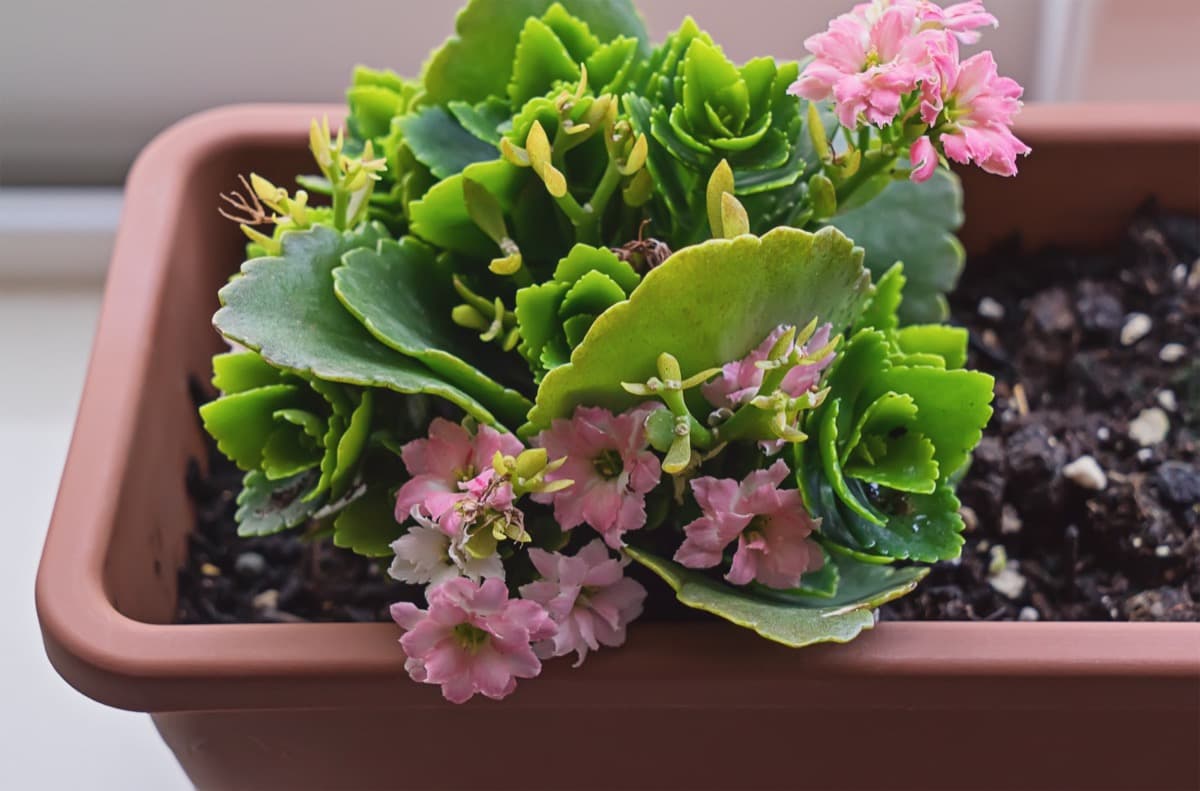
Water Requirement for Growing Kalanchoe Indoors
To ensure your Kalanchoe blooms, giving it the right amount of water is important. Allow the soil to dry between watering, then give it a good soaking. During the winter months, reduce watering to once a month. When growing Kalanchoe in pots, ensure the pot has drainage holes. Knowing the correct water requirements for growing Kalanchoe in pots is important to ensure your plants have enough water. The amount of water a Kalanchoe plant needs depends on the size and type of pot and the climate and weather conditions.
For example, a small pot may need to be watered daily during hot summer days, while a large pot may only need to be watered every other day. The watering frequency can be reduced in cooler weather or shady areas. It is always best to check the soil before watering to ensure it is dry. If the soil is wet, the roots will rot, and the plant will die. When watering, use room temperature water and avoid getting water on the leaves to prevent leaf spot diseases.
Container Size Required for Growing Kalanchoe
The container size required for growing Kalanchoe will depend on the plant size. A small plant will require a small pot, while a larger one will need a larger one. The best way to determine the size of the pot is to look at the plant’s roots. If the roots are crowded, then it is time to repot the plant into a larger container.
In case you missed it: How to Grow and Care for Magnolia in Your Garden: A Beginners Guide
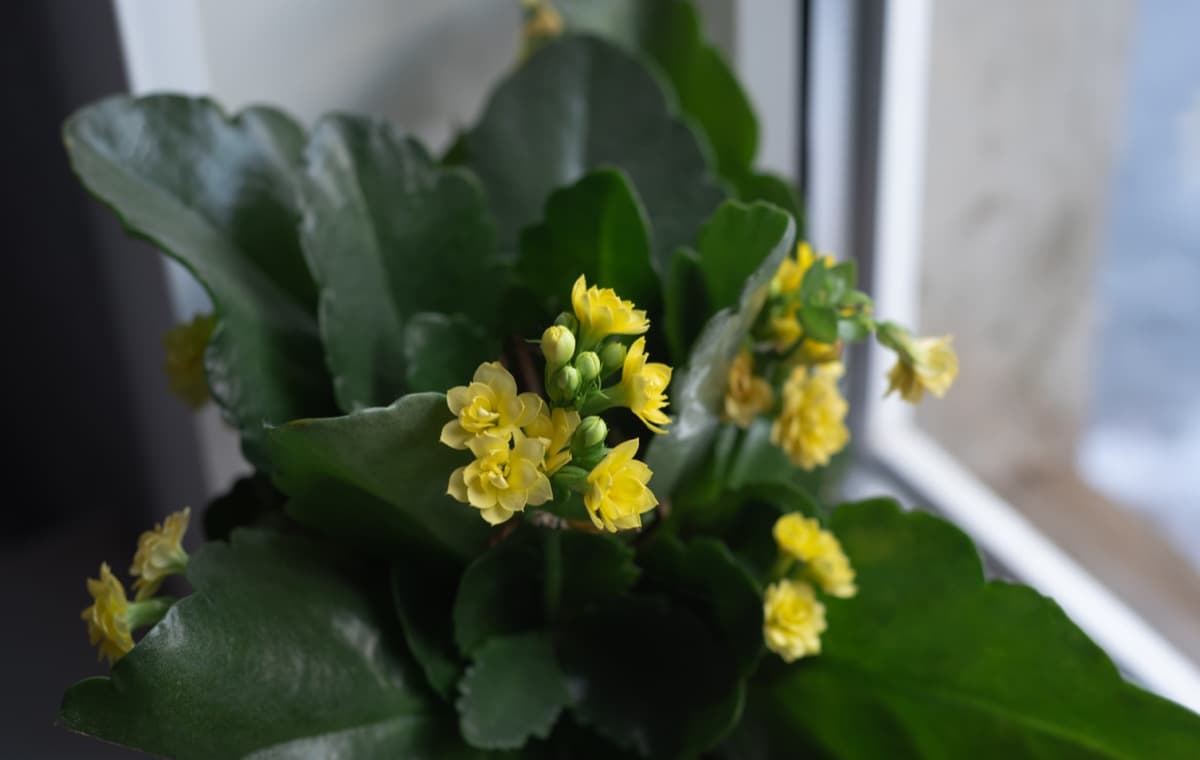
Propagating Kalanchoe
From Cuttings
If you’re interested in propagating Kalanchoe, there are a few things you’ll need to know. First, choosing a healthy, mature plant to propagate from is important. Once you’ve done that, you’ll need to take cuttings from the plant. The best time to do this is in the spring or summer. Cut below a leaf node (the point where the leaf meets the stem). Make sure each cutting has at least one leaf attached. Cuttings with multiple leaves will have a better success rate.
Once you’ve taken your cuttings, it’s time to put them up. Use a well-draining potting mix and ensure each cutting has its pot. Water the soil lightly and place the pots in a sunny location but out of direct sunlight. Keep an eye on your cuttings and water them as needed – they should start to produce new growth within a few weeks. Once they’ve rooted and produced new growth, you can transplant them into larger pots if desired.
Kalanchoe Plant Care Indoors
Fertilizer Requirement for Growing Kalanchoe Indoors
When growing Kalanchoe in pots, you need to know key fertilizer requirements. First and foremost, your Kalanchoe will need a well-draining potting mix. Secondly, you’ll need to fertilize your plant every two weeks with a half-strength solution of liquid fertilizer. Be sure to flush the potting mix with clear water after each application of fertilizer to prevent salt build-up. To ensure your Kalanchoe receives the nutrients it needs to grow strong and healthy, fertilize it monthly using a balanced fertilizer of 10-10-10. If you’re growing Kalanchoe in pots, be sure to use a fertilizer that’s specifically formulated for container plants.
In case you missed it: How to Grow and Care for Forsythia in Your Garden: A Step-By-Step Guide for Beginners
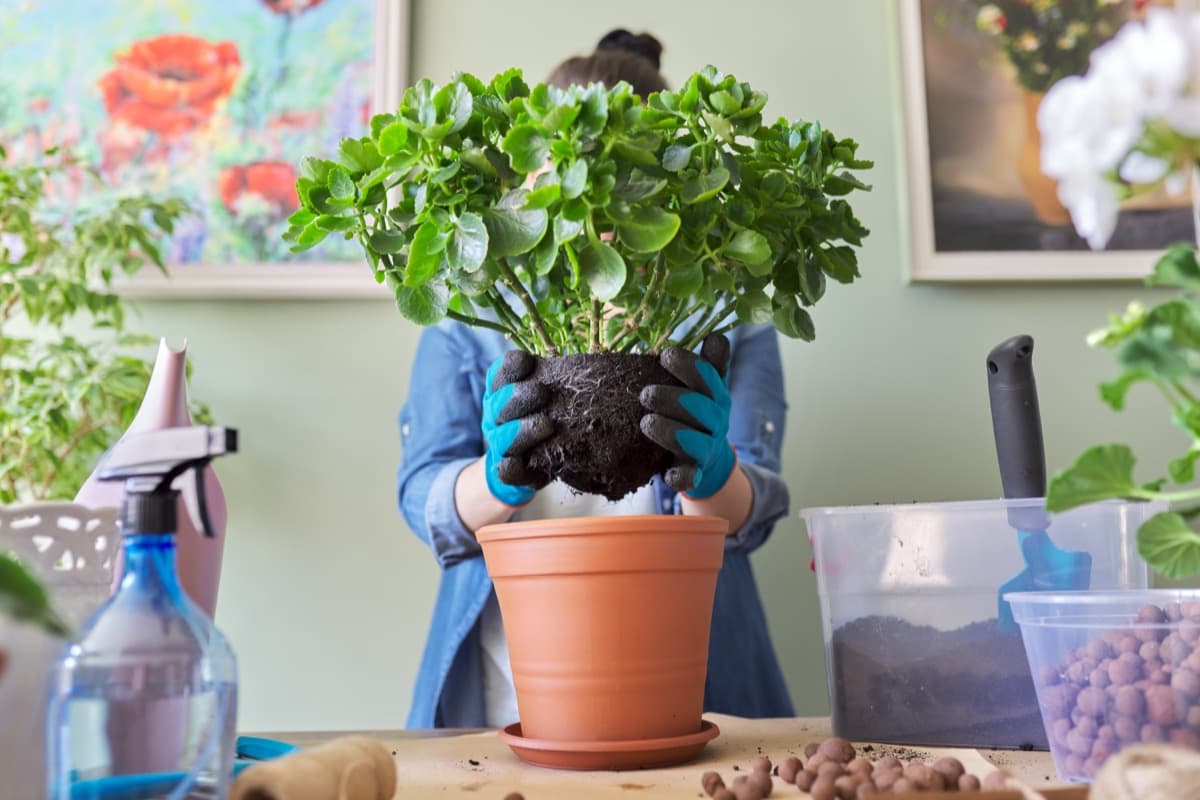
Pruning Kalanchoe Plant
To keep your Kalanchoe plant looking its best, it’s important to prune it regularly. You can remove any dead or dying leaves or flowers from the plant. Cut them off at the base, being careful not to damage the main stem. Next, trim back any long or scraggly stems. Cut them back to a point just above where they branch off the main stem. Finally, shape the plant by trimming off any stray leaves or stems sticking out beyond the overall shape of the plant.
Kalanchoe Plant Care in Winter
During the winter, Kalanchoe plants need less water than they do during other seasons. These plants also benefit from occasional misting, which helps to increase humidity and prevent the leaves from drying out. If you live in a particularly dry climate, you may want to consider moving your Kalanchoe plant to a humid room or placing it on a pebble tray. Kalanchoe plants also require less fertilizer during the winter months.
Stop fertilizing altogether if your plant is not actively growing. You can apply a diluted fertilizer solution every few weeks if it produces new leaves. Be sure to flush the pot with fresh water after each fertilization to prevent salt build-up. As temperatures cool down in fall, Kalanchoe plants will go dormant. During this time, reduce watering and stop fertilizing altogether. Allow the plant to rest until early spring when active growth resumes.
In case you missed it: Best Bamboo Plants for Screening and Hedging
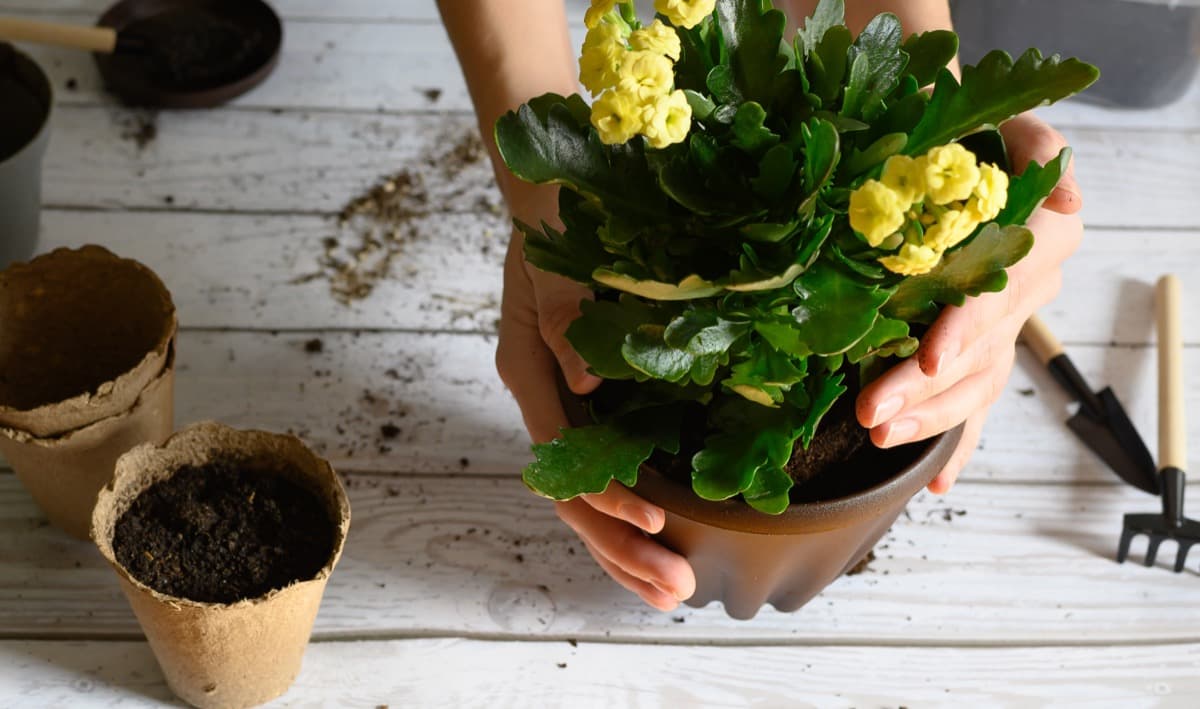
Pests and Diseases of Kalanchoe and Their Control
One of the most common pests that can affect Kalanchoe plants is mealybugs. These small, white insects cause their leaves to turn yellow and drop off. Another common pest is aphid green insects that feed on plant sap. Aphids can cause stunted growth and curled leaves and spread diseases. Spider mites are another type of pest that can infest Kalanchoe plants. These tiny creatures feed on the plant sap, leaves turn yellow, and eventually drop off.
These pests can be controlled with regular insecticidal soap or neem oil applications. Kalanchoes are also susceptible to scale insects. These pests feed on the sap, causing leaves to turn yellow and eventually drop off. It can be controlled with insecticidal soap, while the scale can be removed with a cotton swab dipped in rubbing alcohol.
Root rot is the most common problem with growing Kalanchoe in pots. This can be caused by over-watering, poor drainage, or both. If your plant has root rot, the first step is to improve drainage. Powdery mildew and leaf spot can also be problematic, especially if the leaves are too wet. A fungicide can control these, but catching them early is important.
In case you missed it: Top 15 Plants to Bring Good Luck and Prosperity
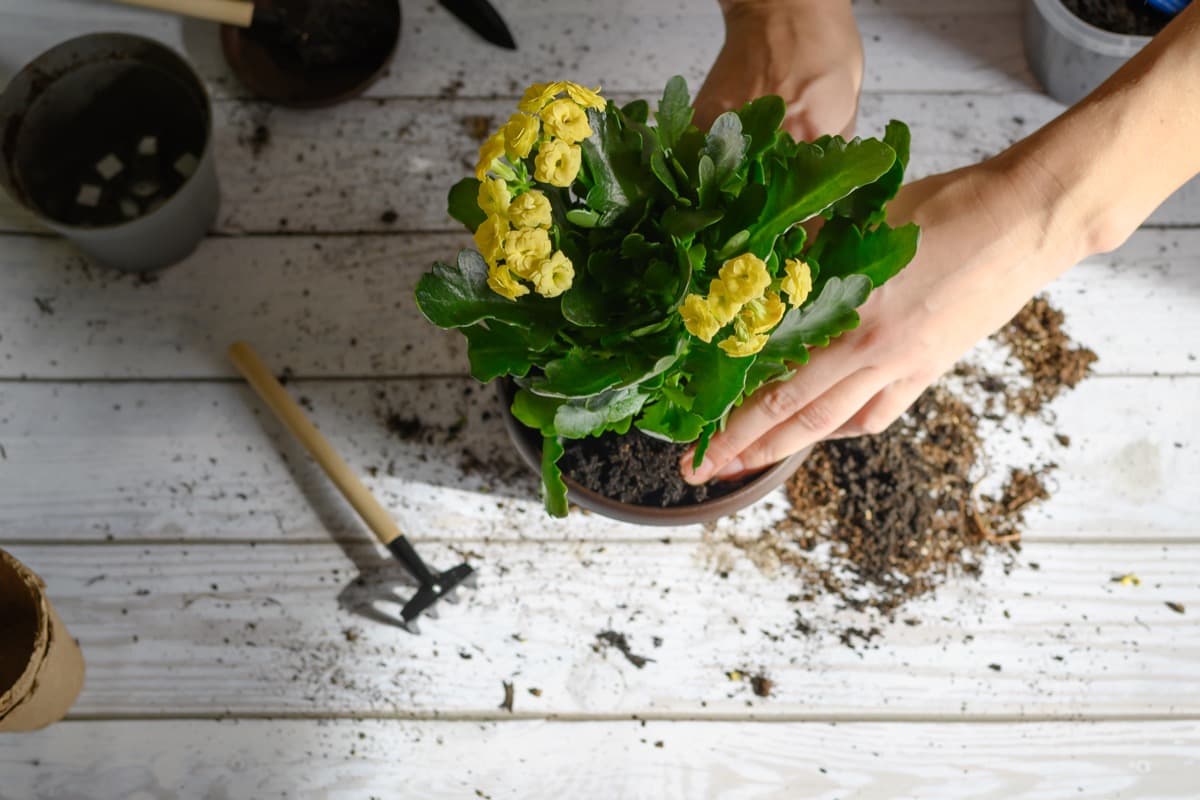
Conclusion
Kalanchoe is a great pot plant because it is easy to care for and can thrive in many different potting mixes. Kalanchoes are popular houseplants because they require little care and can tolerate neglect. Kalanchoe plants are a great choice for first-time gardeners and can bring vibrant colour to your indoor space.
When grown in pots, proper care is essential to keep them healthy and beautiful. With the right soil, adequate light, regular watering, and timely fertilizer application, Kalanchoe plants will thrive in their new home. Whether you opt for small or large pots, they’ll provide plenty of enjoyment as they create an atmosphere of tranquility indoors.
- Seasonal Flower Gardening: Best Practices for Spring, Summer, Fall, and Winter
- How to Grow Hibiscus from Flower
- Plantation Ideas for Home Decoration: A Beginners Guide
- Flower Garden Designs and Layouts for Beginners
- Planting and Spacing Techniques in Papaya: A Beginner’s Guide
- Growing Gold: Essential Techniques for Planting Pineapples
- How to Make Kalanchoe Plant Bushy: Home Remedies and Solutions
- 11 Reasons Why Your Gardenia is Not Blooming: Home Remedies and Solutions
- Eco Elegance: The Guide to Designing a Drought-Tolerant Landscape
- Gardening on a Slope: Strategies for Hillside Landscaping
- Nourish and Flourish: Top Organic Mulches for Thriving House Plants
- Everything You Want to Know about Indian Mogra Flower: Discover Uses and Growing
- Green Thumb Success: Expert Tips for Cultivating Greenhouse Pumpkins All Year Round
- Maximize Growth & Flavor: The Ultimate Guide to Companion Planting in Herb Gardens
- How to Control Rhododendron Problems Naturally: Home Remedies and Organic Ways to Fix Them
- Natural Magic: The Remarkable Benefits of Cinnamon for Plants
- Best Steps to Revive Dying Tulip with Natural and Organic Treatment
- 10 Reasons Why Your Angel Trumpet is Not Blooming: Remedies and Treatment
- How to Fix Periwinkle Leaf and Flower-Related Problems: Natural Remedies and Solutions
- How to Fix Zinnias Leaf and Flower Problems: Discover Natural and Home Remedies
- Organic Steps to Induce Lemon Tree Flowers: A Comprehensive Guide
- Bloom Booster: Crafting the Perfect Homemade Bougainvillea Fertilizer
- Optimizing Growth: A Guide to Applying NPK Fertilizer for Potted Plants
- 10 Best Homemade Fertilizers for Rubber Plant: DIY Recipes and Application Method
- How to Boost Female Pumpkin Flowers: Effective Steps for More Flowers and High Yields
- Transform Your Indoor Garden: Top Benefits of Pink Salt for Houseplants
- 10 Best Homemade Fertilizers for Peacock Plants (Calathea): Easy DIY Guide
- Unlock Blooms: 9 Reasons Why Your Potted Chrysanthemum is Not Blooming
- 8 Reasons Why Your Potted Hibiscus is Not Blooming: Fix it with Simple Solutions
- Unlock Blooms: 9 Key Reasons Your Potted Frangipani Won’t Flower
- 10 Reasons Why Is My Ice Plant Not Blooming: Remedies and Treatment
- 10 Reasons Why My Potted Hydrangea Not Blooming: Treatment and Remedies
- 10 Reasons Why is My Wisteria Not Blooming: Remedies and Treatment
- 10 Reasons Why is My Goldfish Plant Not Blooming: Remedies and Treatment
- Maximize Your Space: Ultimate Guide to Balcony Gardening with Grow Bags
- 10 Reasons Why Your Iris is Not Blooming: Remedies and Treatment